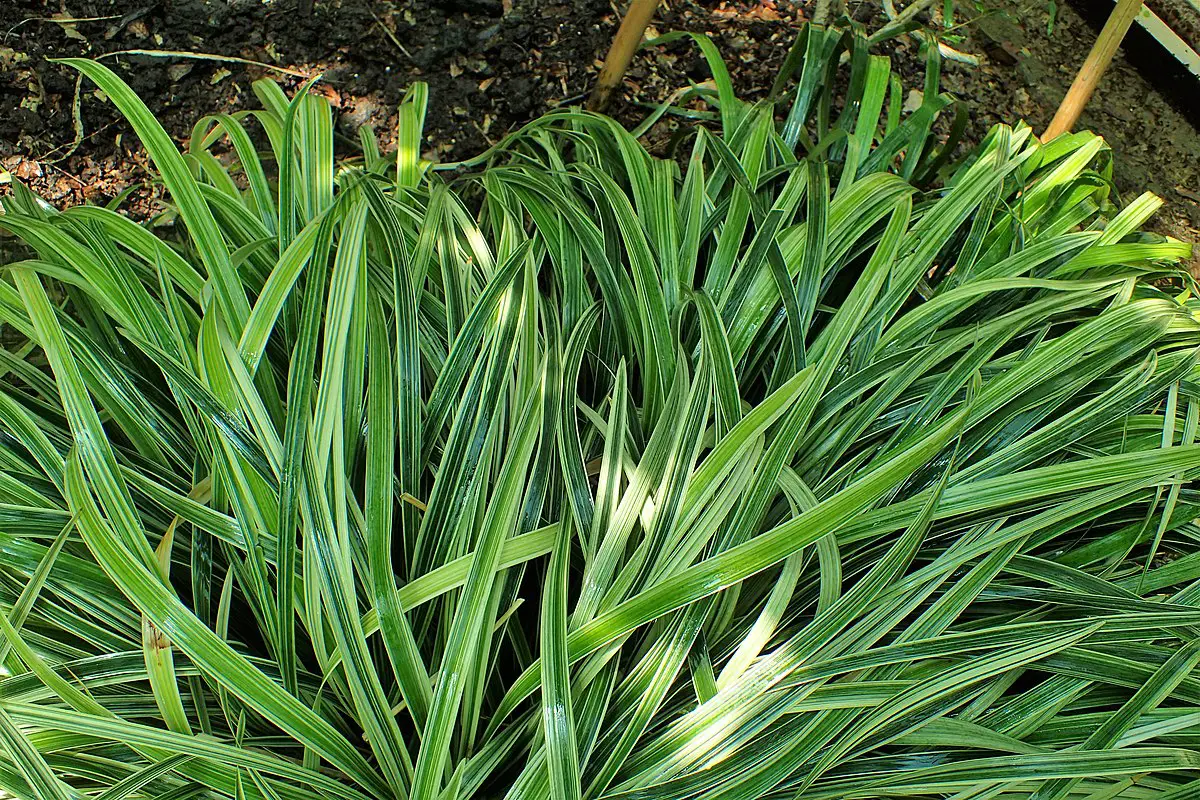
Today we are going to talk about a herbaceous plant that can be perfectly planted in a pot or for garden decoration. Its about Ophiopogon jaburan. Its common name is ribbons, snake beard, and convalaria. It comes from Japan and has thick clumps. It is perfect for those people who are starting in the world of gardening since it does not have too complicated care.
Therefore, we are going to dedicate this article to tell you all the characteristics, cultivation and care of the Ophiopogon jaburan.
Key features

It is a plant that belongs to the Liliaceae family and is a perennial herbaceous plant that forms thick clumps. Its leaves are of the tapered type, hence its common name, and of a green color. They are leaves with great length that can measure up to 60 centimeters and 1 centimeter in diameter.. They are inserted directly into the roots which makes it a very interesting plant to look at. It is not a plant that is known for its flowers, although it also has them with great beauty. And it is that it generates floriferous stems that are responsible for supporting the hanging inflorescences. These inflorescences are tubular-shaped flowers of a white color.
They can generate a good contrast between green leaves and white flowers, perfect for corners of the house. Normally, it can be had both indoors and outdoors since its care does not vary too much. You just have to take into account some aspects that are fundamental when having our plant. The flowering season begins in late summer and extends partly through fall. For it to have a good flowering it needs somewhat cooler temperatures that begin to be during the end of summer.
As for the fruit, it is a plant that produces berries of a dark blue color. They are not edible but they also help create various combinations. These fruits appear once the plant has flowered in early autumn. There are some varieties of Ophiopogon jaburan which have leaves with longitudinal striae in a white color. Some people think that they are plants that belong to another family because they have different colored leaves. However, there are also other varieties that have golden yellow leaves and are also ridged. The Caeruleus variety has dark green leaves and its flowers are blue and purple. It is one of the most demanded for having these striking colors.
Requirements of Ophiopogon jaburan

The Ophiopogon jaburan It is a type of plant that it does not have much longevity. It is perfect to have a while and decorate the house temporarily to make way for various varieties. There are many people who want to decorate their home but do not want the plants to be very durable. This is because the decorations can vary both indoors and outdoors.
As for its care, the first thing to take into account is the temperature. Prefers to live at relatively low temperatures around 13-18 degrees. It is one of the reasons why it begins to bloom when the summer is over. However, it can also adapt to higher temperatures since it has ease. However, it is not recommended to be continuously exposed to temperatures of 10 degrees or less during the winter time. Its leaves could appear and end up damaged by low temperatures. Therefore, it is advisable to store it indoors during colder winters.
The location should be in a place with intense light but without direct sun. In this aspect, note key differences between interiors and exteriors. If we are going to place it indoors, we must find a bright place in the house such as near a window. It is in this place where you will receive the light you need but without direct sunlight damaging the leaves. On the other hand, if we want to sow the Ophiopogon jaburan outdoors, we must find an area where it does not receive direct sunlight.
The soil and substrate must be a growing mix that is made up of one part organic mulch, one part peat and two part sand. These are the perfect combination so that the plant can have a flowering in perfect conditions. Otherwise, its leaves will not develop quite well, being its greatest attraction.
Caring for the Ophiopogon jaburan

Once we know what are the requirements that the Ophiopogon jaburan we go on to analyze what are the cares for its correct maintenance. The first thing to take into account is the humidity of the environment. It needs high humidity to be able to grow and stay in good condition. For this, if we see that the place where it is planted does not have a high degree of humiditywe can spray the leaves from time to time so that a certain degree of constant humidity is maintained.
Watering should be moderate during the vegetative period but we must completely wet the mixture. The indication to water again should be to leave the surface dry before doing it again. During the winter rest you should only prevent the mixture from drying out completely. The frequency of irrigation should be reduced so as not to exceed the plant. The same goes for the ground. It must have good drainage so that irrigation water does not accumulate.
Regarding the propagation, during the spring the clusters that are more dense are divided into a series of fragments and each one of them must have roots and about 10 leaves. Each fragment is planted separately in the final mixture and treated as if it were an adult plant. You do not have to vary the care.
It is not a plant that suffers from frequent pests and diseases so there is no need to worry. For its transplant it is better to wait for spring only if the tiller completely occupies the space of the pot.
I hope that with this information you can learn more about the Ophiopogon jaburan and their characteristics.
